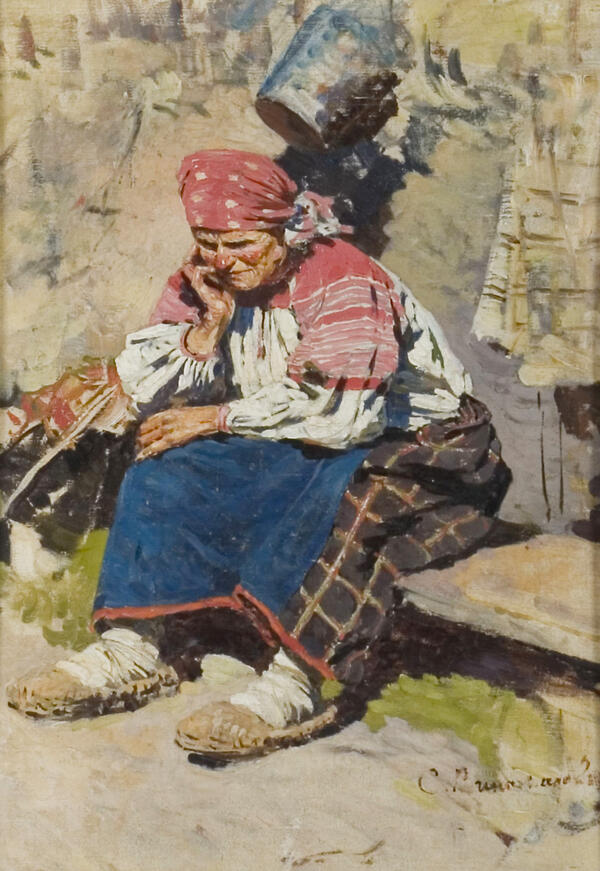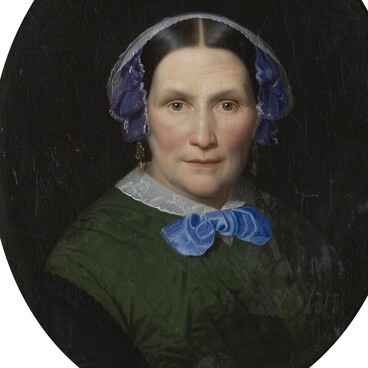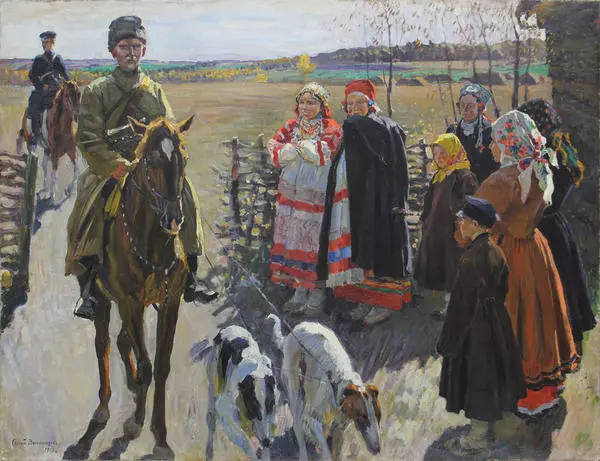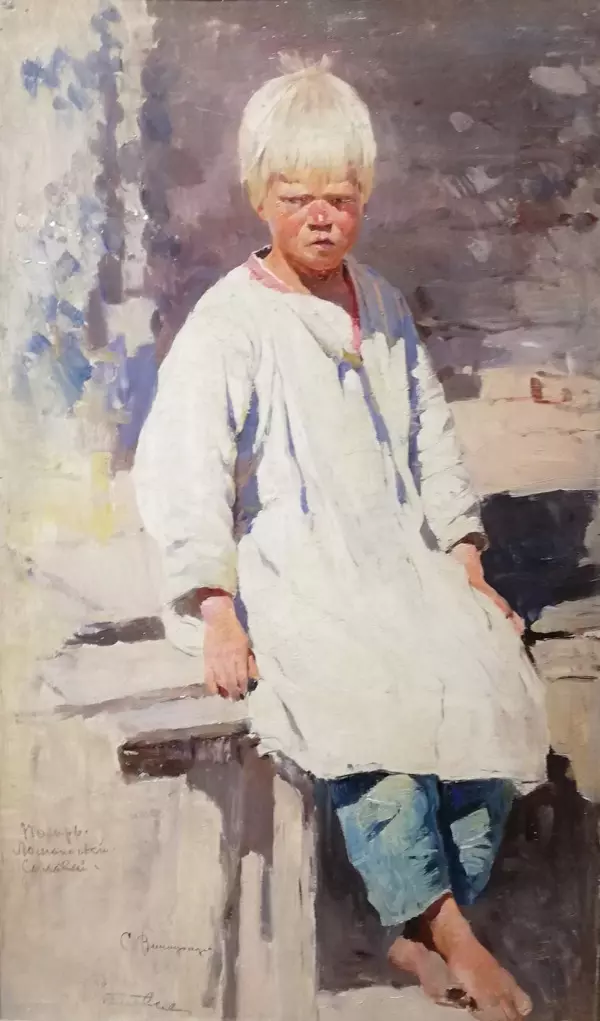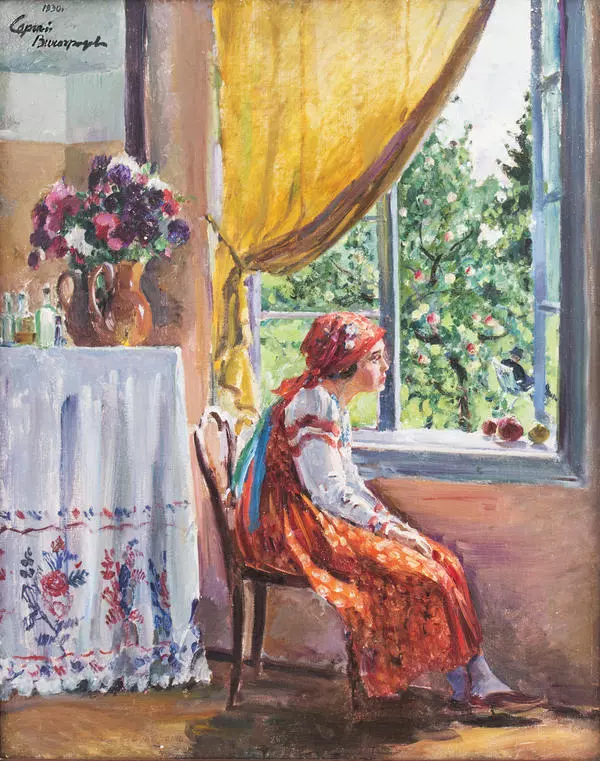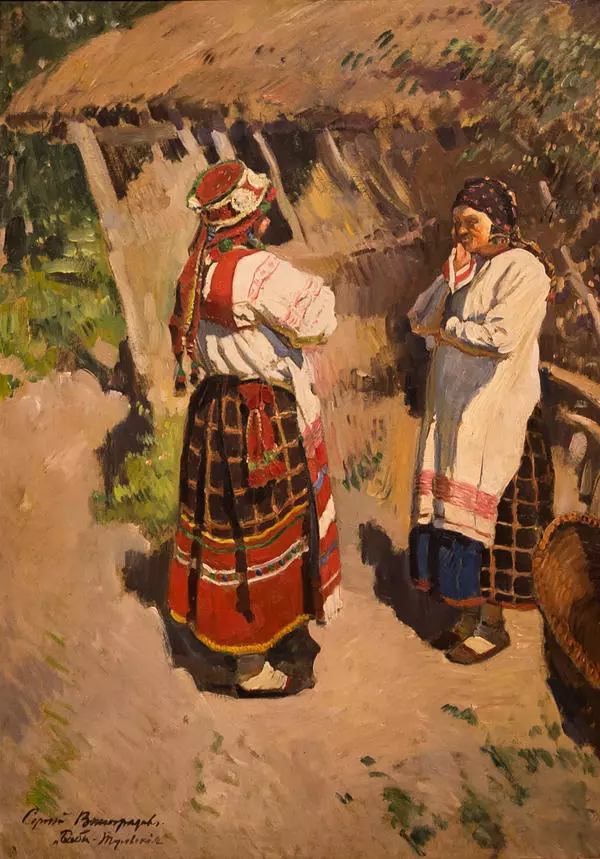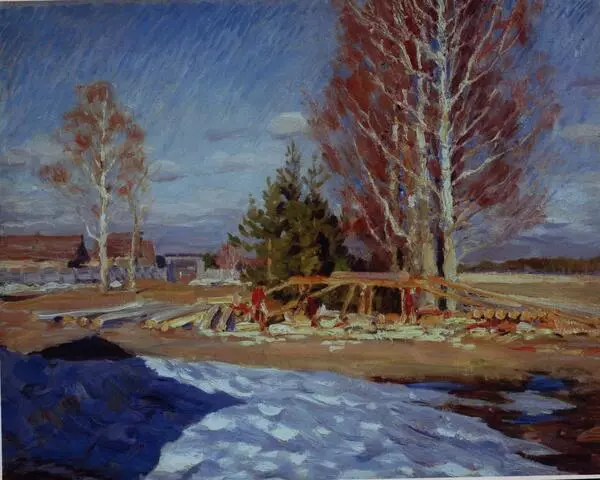Sergei Arsenievich Vinogradov was born in 1869 in the village of Bolshye Soli, Kostroma Governorate, in the family of a priest. From 1880 to 1889, he studied at the Moscow School of Painting, Sculpture and Architecture, where his teachers were Yevgraf Semyonovich Sorokin, Vladimir Yegorovich Makovsky, Vasily Dmitriyevich Polenov, and Illarion Mikhailovich Pryanishnikov. In 1889, he entered the Academy of Fine Arts, but for health reasons he stopped his studies.
Vinogradov was well versed in art. He helped the Morozov brothers to amass a large collection of works by modern artists. For example, it included paintings by Pierre-Auguste Renoir and Claude Monet.
From 1924 to 1925, the artist headed the organizing committee of the exhibition of Russian art in the United States. Sergei Arsenievich did not return to Russia from the USA and moved to Riga, where he remained until the end of his life. There, he worked at a private art school and held three solo exhibitions.
Vinogradov’s art is characterized by brightness and saturated color palettes, which bring the viewer joyful experiences. Vinogradov was particularly interested in everyday episodes and stories. On his canvases, one can often find genre scenes, depicting ordinary people, images of village izbas and churches, as well as scenes from the life of the nobility. By examining his genre paintings, one can trace how the lifestyle of Russian people gradually changed, but life still boomed within them with all its joys and sorrows.
This work, a study for an 1893 painting housed in the collection of the State Tretyakov Gallery, is a great example of combining the traditions of the Wanderers with the plein-air experiments of the painter. The plot is typical of the Wanderers’ paintings. In the rays of the sun, we see a hunched figure of a woman immersed in gloomy thoughts. The artist focuses on her overworked hands, on the tan she obtained during hard work. The sad mood of the heroine is also emphasized by her dusty, ragged shoes. All this invariably inspires thoughts about the difficult fate of village women. The painting is filled with unrushed contemplation and reflection. But, surprisingly, the main emotional component of the work is the brightness and play of light and color accents, which increase emotional dynamism and psychological capacity of the image.
Vinogradov was well versed in art. He helped the Morozov brothers to amass a large collection of works by modern artists. For example, it included paintings by Pierre-Auguste Renoir and Claude Monet.
From 1924 to 1925, the artist headed the organizing committee of the exhibition of Russian art in the United States. Sergei Arsenievich did not return to Russia from the USA and moved to Riga, where he remained until the end of his life. There, he worked at a private art school and held three solo exhibitions.
Vinogradov’s art is characterized by brightness and saturated color palettes, which bring the viewer joyful experiences. Vinogradov was particularly interested in everyday episodes and stories. On his canvases, one can often find genre scenes, depicting ordinary people, images of village izbas and churches, as well as scenes from the life of the nobility. By examining his genre paintings, one can trace how the lifestyle of Russian people gradually changed, but life still boomed within them with all its joys and sorrows.
This work, a study for an 1893 painting housed in the collection of the State Tretyakov Gallery, is a great example of combining the traditions of the Wanderers with the plein-air experiments of the painter. The plot is typical of the Wanderers’ paintings. In the rays of the sun, we see a hunched figure of a woman immersed in gloomy thoughts. The artist focuses on her overworked hands, on the tan she obtained during hard work. The sad mood of the heroine is also emphasized by her dusty, ragged shoes. All this invariably inspires thoughts about the difficult fate of village women. The painting is filled with unrushed contemplation and reflection. But, surprisingly, the main emotional component of the work is the brightness and play of light and color accents, which increase emotional dynamism and psychological capacity of the image.

